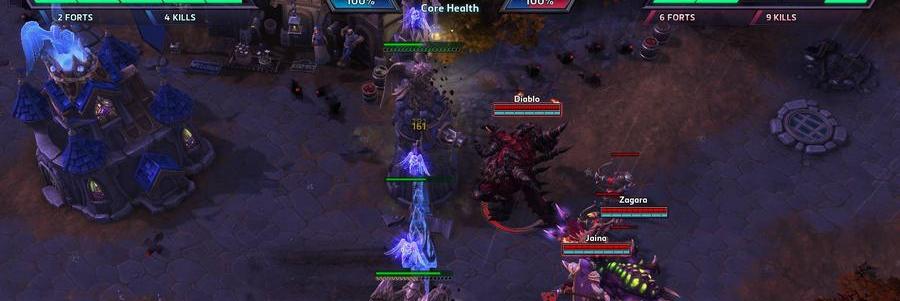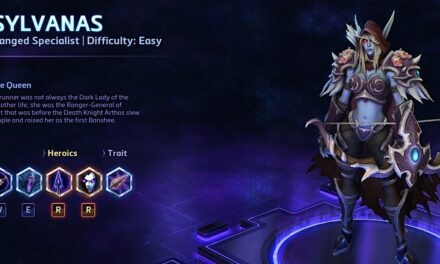Other than opposing heroes, there are a number of entities on each Heroes of the Storm map that can cause damage and provide resistance. From NPC mercenaries to minion waves, enemy structures to map objectives, in the heat of battle it’s easy to lose sight of the many different sources of incoming harm, in favor of focusing on the enemy team.
Friends and I often throw around the term “blood in our eyes” when we or a teammate foolishly chases an enemy hero beyond the point of sensibility; the eagerness to try and get a kill can blind a player to other dangers. The other shorthand we use—nearly every game it seems—is “divorce fort.” After years of playing together, the phrase quickly communicates a specific idea, one that bears discussing in detail.
Each team’s core is protected by several layers of defensive structures; a powerful keep, defensive walls with automated turrets, and a less-powerful but still imposing fort with another set of walls and turrets. The buildings and surrounding turrets target all foes who venture too close, and pack a powerful punch that can quickly kill even the most hearty heroes. A specific mechanic of HOTS is that these defensive structures prioritize hostile NPCs over enemy heroes; only when there are no minion waves, mercenary camps, or summoned allies nearby will they start firing on players.
Best practice dictates that, barring some extremely long-range heroes like Junkrat, a team waits until there is a healthy wave of friendly NPCs to soak structure damage before assaulting entrenched defenses. With the safety blanket of low-level drones, a team will often focus on enemy heroes, until such time as the structures are destroyed or the minion wave is ground to dust. Best practices being what they are, often reality sees heroes plunge deep into enemy territory with wonton disregard for their own safety, trying to secure a kill on an opposing hero.
This overzealous assault certainly comes up in my group of friends and teammates, which lead to many calls of “if you go past that fort, I’ll divorce you,” when we saw that someone had a bit too much blood in their eyes. Now we say someone is “divorce-forting” when they are needlessly taking damage from structures due to their lack of map awareness.
I want to stress that while there are times when going behind a divorce fort is worthwhile, those times are few and far between. Just because someone escaped death doesn’t mean it was a good idea—one has to look at the aggregate, not individual attempts in isolation. Charging behind an enemy’s defenses without the benefit of NPC protection is a losing game.
One of the only situations where I can see being so reckless consistently pay off is to secure the final kill necessary to complete Zul’jin’s level 1 quest. It provides such an immediate power spike that the trade off is likely very worthwhile. That said, if someone charges in and misses that shot, then their team is down a hero for no benefit at all.
The key takeaway from this article is that divorce-forting is a terrible “strategy”—just don’t do it.
Header image is in-game footage from Heroes of the Storm.
















